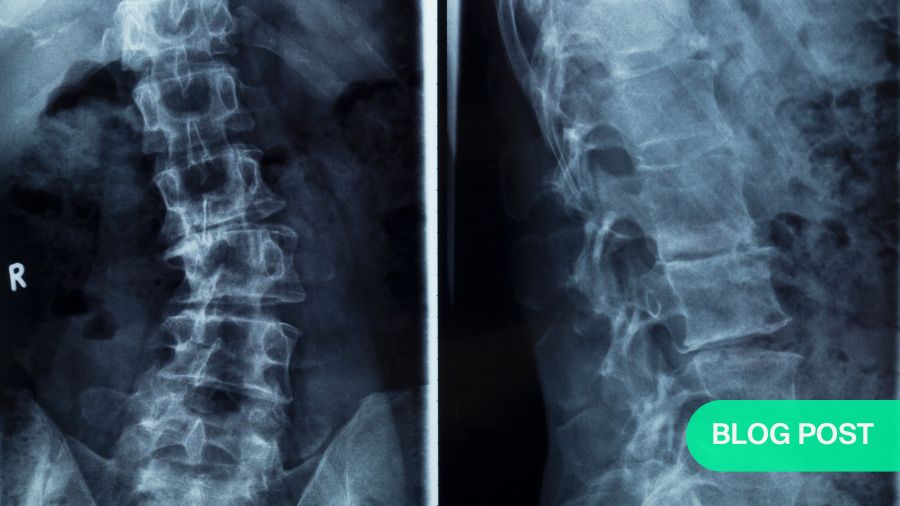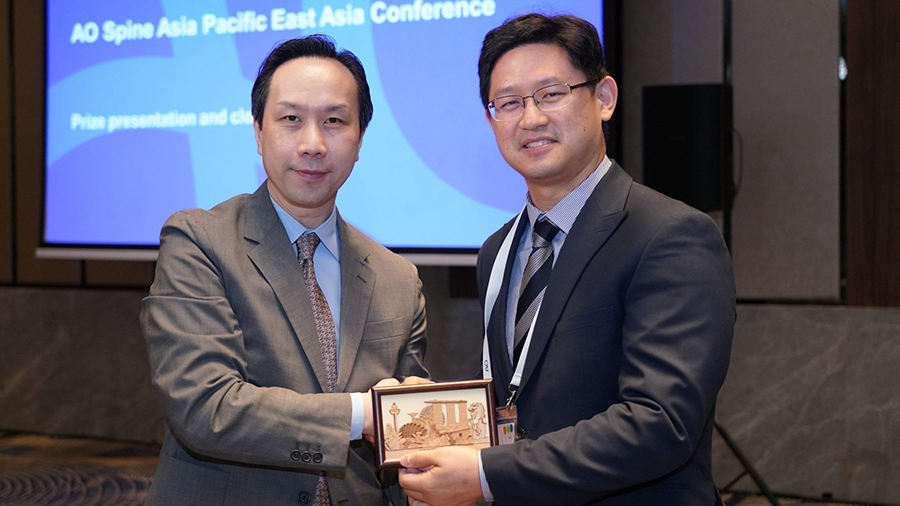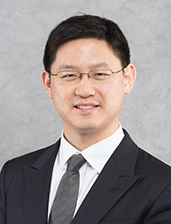Adolescent idiopathic scoliosis: Curve progression in brace patients can be predicted by curve flexibility and in-brace correction

In working with adolescent idiopathic scoliosis (AIS) patients at the Department of Orthopaedics and Traumatology at the University of Hong Kong, we have a long history of understanding curve flexibility and using it as a major parameter that helps us prognosticate. We feel that curves that are more flexible generally do better in bracing or in surgery, and we don’t need to be so aggressive in these cases.
We’ve already created a surgical index, called the fulcrum bending correction index (1), that helps us determine how we operate our patients. We wanted to create something similar for the brace population: an easy-to-use tool that helps us prognosticate whether a brace patient will get worse or not.
This led us to develop the supine correction index (SCI), which was published recently in the Bone & Joint Journal (2) and recognized with the Best Paper award at the AO Spine Asia Pacific East Asia Conference. The SCI was the result of a prospective study that followed 207 AIS patients from pre-brace fittings through brace removal (3, 4). The goal was to find a more accurate way to predict curve progression. When we see our patients with scoliosis, what parents really want to know is “Is my son or daughter going to get worse? Do they need bracing? Do they need surgery? If they’re in bracing, will it work?”
Bracing patients and their families
In determining whether to brace a patient, we follow SRS (Scoliosis Research Society) guidelines, with additional considerations based on distal radius and ulna (DRU) classification that we have previously described (5, 6). Before every single brace, we do supine X-rays (where the patient lies flat) and standing X-rays. The orthotist and surgeon then fabricate a custom-moulded brace based on the supine X-ray. For example, “This is an area that is more flexible, so we may not need to put so much padding. This area is a bit more rigid, so we’ll put more padding there.” After the brace is manufactured, an initial in-brace standing X-ray is obtained to determine how well the brace corrects the curve.
Cobb angles are measured from these initial X-rays and used to predict how well the patient will respond to brace treatment. A patient’s Flexibility is calculated by comparing the pre-brace standing Cobb angle to the pre-brace supine Cobb angle. A patient’s Correction rate is calculated by comparing the pre-brace standing Cobb angle to the first in-brace standing Cobb angle. This recent study introduced the Supine correction index, which is defined as the ratio between Correction rate and Flexibility. The SCI indicates the ability of the brace to correct more than the supine flexibility, hence the brace fabrication is very important for success.
The significance of this recent publication is that it provides specific cutoff values: a Flexibility of greater than 18.1%, a Correction rate of greater than 28%, and a Supine correction index of greater than 1.21 were associated with a lower risk of curve progression in patients undergoing brace treatment for AIS. Of the 207 patients in the study, 45 patients (or 22%) experienced curve progression, and 16 patients (or 8%) progressed to the surgical threshold and/or underwent surgery.
Base treatment on reality of curve progression
While the results were not surprising, having these figures is helpful for day-to-day practice. When you see a patient and their parents, you’re able to draw out the Cobb angle and actually calculate in front of them. You’re able to say “Based on our study of many patients, it’s likely that you won’t get curve progression. Your kid’s supine correction index is higher than this.” Giving this answer provides them with encouragement to follow through with the treatment. This is essential because the biggest obstacle in brace treatment is non-compliance.
When a patient’s SCI indicates they are likely to need surgery, we still try a brace first. We want to try a conservative treatment before we adopt surgery. The brace might work, it might be helpful. There are always outliers. However, we keep a close eye on them because if they deteriorate early, we might want to stop earlier and avoid bracing all the way through maturity. Bracing is not a simple or comfortable task. The brace is made of hard plastic and needs to compress the body. So, if it’s really not working out, why delay the inevitable?
Making supine correction index useful for everyone
In this recent study, we showed that high supine flexibility and correction rate are associated with a lower risk of curve progression, after adjusting for maturity and brace compliance. Moving forward, we want to validate what we’ve done in other populations. We’re hoping to find people who are very interested in bracing to study this in their populations. That would make the SCI more convincing, more useful for everyone.
The population in Hong Kong benefits from a long-running screening program that identifies AIS patients early. The first screening happens at 8 or 9 years old. If they don’t find anything, then it’s repeated yearly. If they do find something, the patient undergoes additional testing and is referred to a specialist.
We are conducting ongoing research into curve flexibility at the University of Hong Kong’s Department of Orthopaedics and Traumatology. We’re looking at inherent flexibility and whether that relates to surgical outcome. There’s also great interest in scoliosis exercises. Maybe the flexibility can be changed.
Hopefully, more people can use the supine correction index (SCI) to help their AIS patients. That’s the most important thing, just to help these kids going through a tough time with this problem.
About the author
References and further reading
- Luk, K. D., Cheung, K. M., Lu, D. S., Leong, J. C. (1998). Assessment of scoliosis correction in relation to flexibility using the fulcrum bending correction index. Spine, 23(21), 2303–2307. https://doi.org/10.1097/00007632-199811010-00011
- Wong, L., Cheung, P., Cheung, J. (2022). Supine correction index as a predictor for brace outcome in adolescent idiopathic scoliosis. The bone & joint journal, 104-B(4), 495–503. https://doi.org/10.1302/0301-620X.104B4.BJJ-2021-1220.R1
- Cheung, J., Cheung, P., Luk, K. D. (2019). When Should We Wean Bracing for Adolescent Idiopathic Scoliosis?. Clinical orthopaedics and related research, 477(9), 2145–2157. https://doi.org/10.1097/CORR.0000000000000781
- Cheung, P., Cheung, J. (2021). Sanders stage 7b: Using the appearance of the ulnar physis improves decision-making for brace weaning in patients with adolescent idiopathic scoliosis. The bone & joint journal, 103-B(1), 141–147. https://doi.org/10.1302/0301-620X.103B1.BJJ-2020-1240.R1
- Cheung, J. P., Samartzis, D., Cheung, P. W., Leung, K. H., Cheung, K. M., Luk, K. D. (2015). The distal radius and ulna classification in assessing skeletal maturity: a simplified scheme and reliability analysis. Journal of pediatric orthopedics. Part B, 24(6), 546–551. https://doi.org/10.1097/BPB.0000000000000214
- Luk, K. D., Saw, L. B., Grozman, S., Cheung, K. M., Samartzis, D. (2014). Assessment of skeletal maturity in scoliosis patients to determine clinical management: a new classification scheme using distal radius and ulna radiographs. The spine journal: official journal of the North American Spine Society, 14(2), 315–325. https://doi.org/10.1016/j.spinee.2013.10.045
- Cheung JPY, Cheung PWH, Samartzis D, Luk KD. APSS-ASJ Best Clinical Research Award: Predictability of Curve Progression in Adolescent Idiopathic Scoliosis Using the Distal Radius and Ulna Classification. Asian Spine J. 2018 Apr;12(2):202-213. doi: 10.4184/asj.2018.12.2.202. Epub 2018 Apr 13. PMID: 29713400; PMCID: PMC5913010. https://www.asianspinejournal.org/journal/view.php?doi=10.4184/asj.2018.12.2.202
Disclaimer
The articles included in the AO Spine Blog represent the opinion of individual authors exclusively and not necessarily the opinion of AO Spine or AO Foundation.



